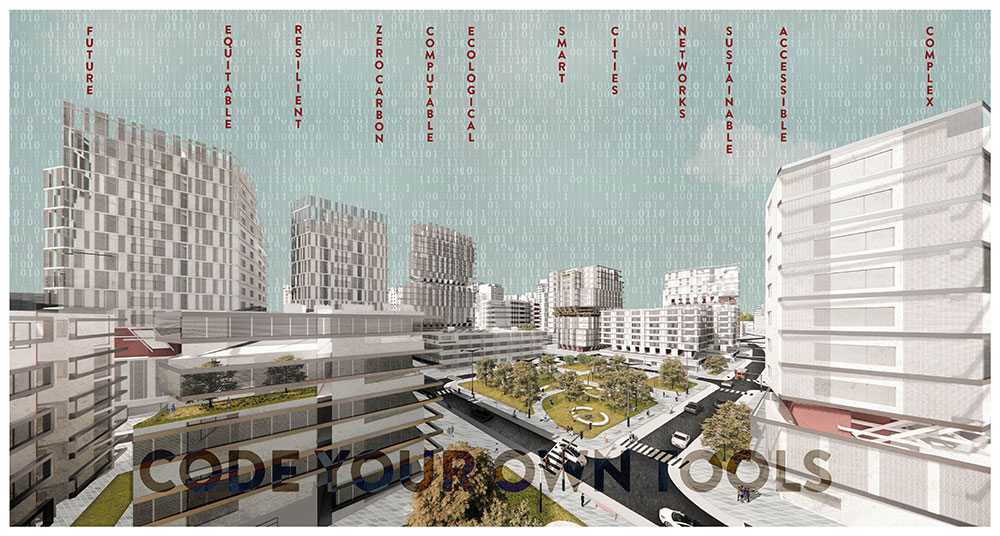[CPU]ai is a master's atelier at the MSA using a complexity framework to progress a new Design Science approach referencing systemic forms of design (R. Buckminster Fuller) and the study of design/the artificial (Herbert Simon). Students translate methods from the [CPU]lab – an externally funded research laboratory – into experimental design approaches through the development of new digital techniques/tools, computational thinking/information systems and applied urban theory addressing social-sustainable-technological transitions and spatio-temporal urban transformations. The work expands the frontier of design studies by addressing shortcomings in the ability to usefully comprehend the implications of design contributions within the complex, multiscale, temporal and emergent phenomena that constitute the contemporary urban process. This year [CPU]ai explores ‘Resilient Urban Futures’ from multiple sustainability perspectives in the MArch (and BA3).
In MArch5, [CPU]ai engages directly with MMU estates as a stakeholder while interpreting the theme as conceptual and theoretical application. PS1 focuses on Design for Manufacturing (DfMA) for student housing as a technology led approach engaging with BIM and future manufacturing, to explore new opportunities within this design space. PS2 focuses on digital design strategies, knowledge-based design and the role of precedent study and analysis in adaptive reuse in architecture.
In MArch6, [CPU]ai engages directly with Manchester City Council and the Far East Consortium on the Northern Gateway regeneration project. The project is one of the largest regeneration projects in the UK (15,000 new residential units for 35,000 people). The fifteen-year strategic development is planned as an extension to the city centre needs to achieve commercial viability/high density, while addressing multiple sustainable development agendas, including the UN-SDG’s and Net-Zero. Design projects were based on: Student led research into the complex (relational, overlapping and contradictory) drivers and trajectories of change in this major redevelopment project; A contextual understanding of theories and expansion of new skills for computational urban design processes/approaches; Development of students own computational constructs/tools/applications to generate temporal and value-based design outcomes; Analysis of generated design outcomes using performance indicators in consultation with the project stakeholders to identify sustainability principles and approaches for best practice.
Twitter: @complexurbanism and @CPU_Ai_atelier
#complexurban #architectsthatcode


